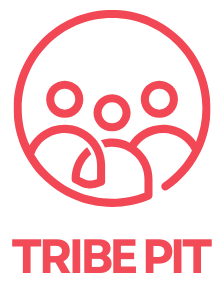LEGO is more than just a toy brand; it’s a global phenomenon that has captured the hearts of millions for generations. However, the iconic brand faced significant challenges in the early 2000s, including declining sales and waning interest from its audience. LEGO’s revival is a masterclass in tribal marketing, demonstrating how rebuilding brand loyalty and fan engagement can lead to unprecedented success.
The Challenges LEGO Faced
By the early 2000s, LEGO’s revenue had plummeted. Over-diversification, competition from digital entertainment, and a lack of connection with its core audience had taken a toll. To turn things around, LEGO needed to rediscover its essence and reconnect with its most passionate fans.
What Is Tribal Marketing?
Tribal marketing focuses on creating strong emotional connections with niche groups or “tribes” of people who share common interests, values, and identities. For LEGO, this meant engaging its existing fanbase and fostering new communities centered around shared creativity and passion for building.
LEGO’s Tribal Marketing Strategies
Here’s how LEGO rebuilt its brand loyalty and fan engagement through effective tribal marketing:
1. Listening to the Community
LEGO actively sought feedback from its fanbase to understand their desires and expectations. Initiatives like the LEGO Ideas platform invited fans to submit and vote on new set designs. This participatory approach empowered fans and made them feel like valued contributors to the brand.
2. Building Communities Around Shared Interests
LEGO created spaces where fans could connect with each other, both online and offline. Events like LEGO conventions, fan expos, and online forums brought enthusiasts together to share their creations and build relationships. These communities became tribes of loyal brand advocates.
3. Embracing User-Generated Content (UGC)
LEGO encouraged fans to share their creations on social media and through platforms like LEGO Life, a safe digital space for kids. UGC not only showcased the creativity of the community but also inspired others to join and contribute to the tribe.
4. Targeting Niche Audiences
Rather than appealing to everyone, LEGO focused on specific audiences, including:
- AFOLs (Adult Fans of LEGO): By introducing advanced and nostalgic sets, LEGO tapped into the passion of its adult fans.
- Licensed Collaborations: Partnerships with popular franchises like Star Wars, Harry Potter, and Marvel attracted fans of those universes into LEGO’s tribe.
- STEM Enthusiasts: Sets like LEGO Mindstorms and LEGO Education kits appealed to parents and educators interested in fostering STEM skills.
5. Leveraging Storytelling Through Media
LEGO’s success with movies, TV shows, and video games brought its brand to life in new ways. Films like The LEGO Movie combined humor, nostalgia, and creativity, resonating with both children and adults. These stories reinforced LEGO’s identity as a brand that celebrates imagination and fun.
The Results of LEGO’s Tribal Marketing Revival
LEGO’s tribal marketing efforts led to a remarkable turnaround. Here are some key outcomes:
- Reignited Brand Loyalty: By engaging directly with fans and involving them in the creative process, LEGO rebuilt trust and loyalty.
- Increased Revenue: LEGO became the world’s largest toy manufacturer in 2014, a testament to its successful revival.
- Expanded Audience: From children to adults, LEGO’s tribes now span across age groups, interests, and geographies.
- Stronger Community: LEGO’s dedicated fanbase continues to grow, fueling the brand’s cultural relevance and market dominance.
Key Takeaways for Businesses
LEGO’s tribal marketing success offers valuable lessons for other brands:
- Engage Your Community: Actively involve your audience in the creative process and make them feel valued.
- Foster Connections: Create spaces where your customers can connect with each other and share their passion.
- Leverage UGC: Encourage and showcase user-generated content to inspire and grow your tribe.
- Target Niche Audiences: Identify specific groups that align with your brand’s values and interests.
- Tell Stories: Use storytelling to make your brand’s values and identity resonate with your audience.
LEGO’s tribal marketing revival is a powerful example of how reconnecting with your core audience can transform your brand. By fostering community, embracing creativity, and listening to its fans, LEGO turned its challenges into an opportunity for growth and innovation. Whether you’re a small business or a global brand, the principles behind LEGO’s success can help you build loyal tribes and thrive in today’s competitive landscape.



